What Does Cottage Cheese Taste Like?
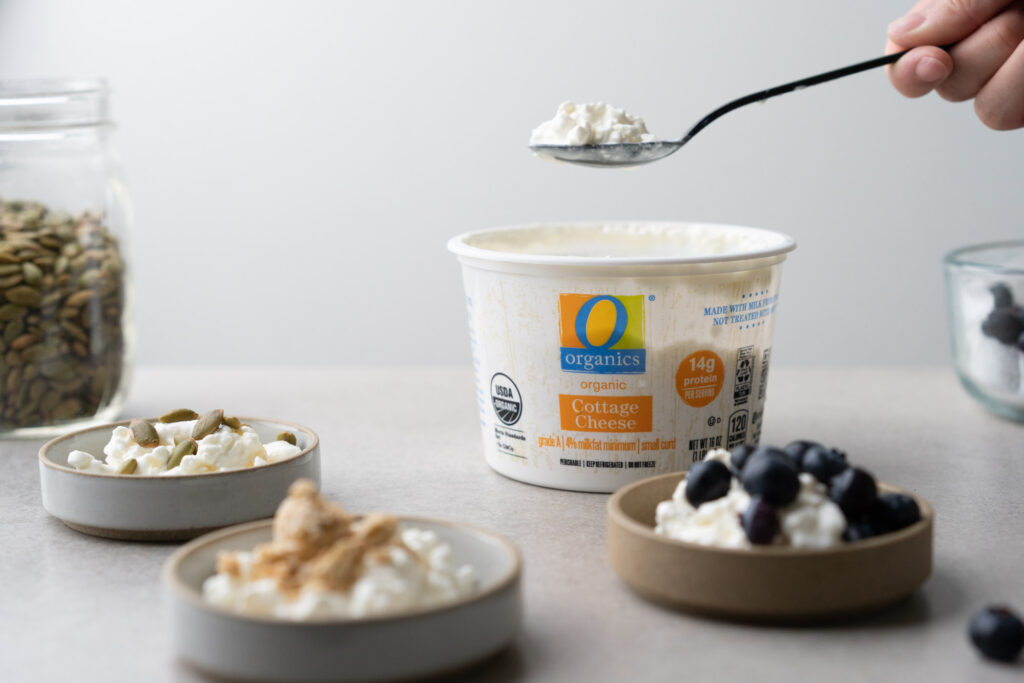
Cottage cheese — people love to hate it. The texture. The taste. It’s unfamiliar and therefore gross.
But if you enjoy a big bowl of unsweetened Greek yogurt with all the toppings, you’ll probably like cottage cheese, too.
I switch off between Greek yogurt and cottage cheese as my high-protein afternoon snack. You can eat it plain or add sweet toppings like jam or honey.
What Does Cottage Cheese Taste Like?
Cottage cheese has a creamy, tangy flavor, similar to ricotta cheese. It’s very subtle, even bland. Some say it’s salty, others say it’s sour. What you taste depends on the flavors your palette is used to. I don’t think it’s as tangy or sour as unsweetened Greek yogurt.
Types of Cottage Cheese
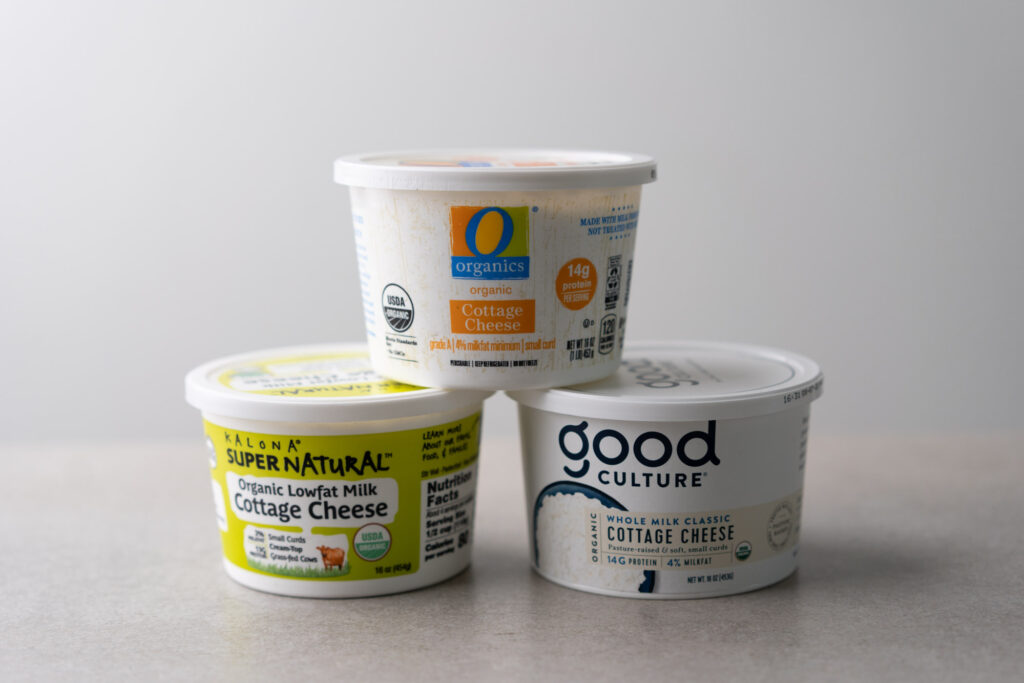
Cottage cheese’s flavor depends on its fat content. The lower the fat, the more sour the cottage cheese. The higher the fat, the more creamy the cottage cheese.
- Nonfat: Fat-free or nonfat cottage cheese must contain less than 0.5 grams of fat per 100 grams (0.5%). It is more tangy and less creamy than other options.
- Nutritional information (½ cup): 76 calories, 11 grams protein, 7 grams carbs, 0.3 grams fat
- Low fat: 1% and 2% cottage cheese is considered low fat. Low fat cottage cheese is a little creamier than nonfat.
- Nutritional information (½ cup, 2%): 110 calories, 14 grams protein, 6 grams carbs, 2.5 grams fat
- Whole milk: Whole milk cottage cheese is around 4% fat. It tastes the creamiest and least tangy.
- Nutritional information (½ cup): 120 calories, 14 grams protein, 3.0 grams carbs, 6.0 grams fat
Note that the nutritional information will vary by brand.
What Exactly Is Cottage Cheese?
Cottage cheese is made when an acid or lactic-acid producing bacteria is added to warm milk to make it curdle. As it curdles, most of the liquid whey protein separates from the casein curds. The curds are then cut up and rinsed, removing more whey. Milk or cream, salt, or flavoring may be added if desired.
Cottage Cheese Texture
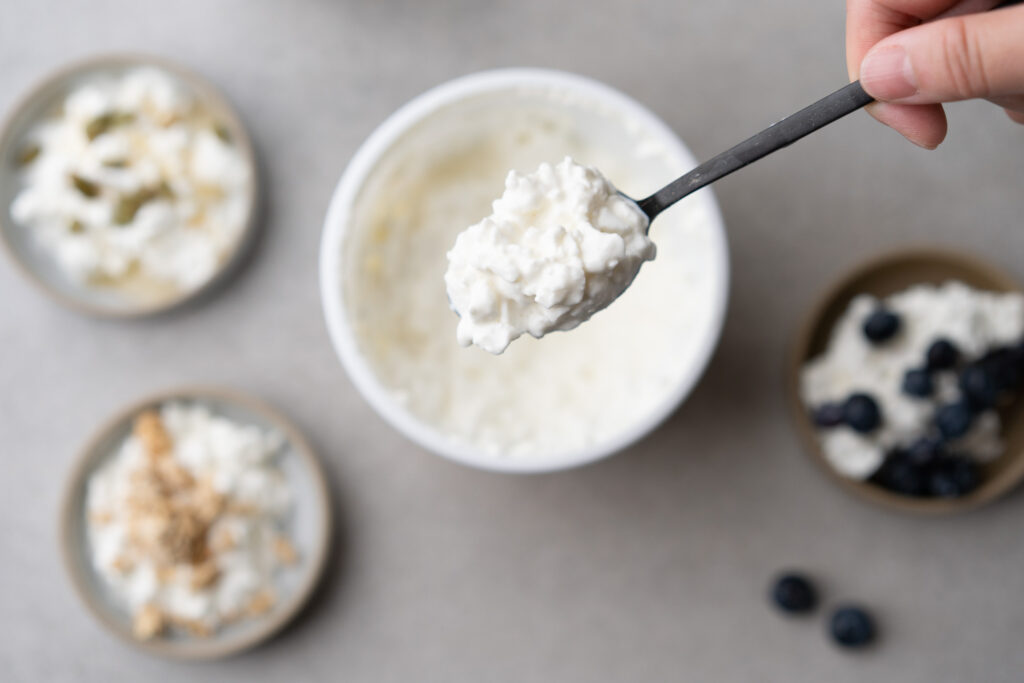
Cottage cheese comes in both small curd and large curd options. You may think the only difference is curd size, but small curd and large curd cottage cheese taste slightly different, too.
- Small curd: Small curds tend to be drier. Some brands will overcompensate for this by adding more milk to the cottage cheese mixture and causing it to become watery.
- Large curd: Large curds hold more moisture, so they’ll typically have a more pleasant texture. They’re also less acidic.
Cottage cheese taste and texture is all about personal preference. If you want a creamier, sweeter flavor, opt for higher fat content and larger curds. It’s also useful to test multiple brands as no two brands are the same.
Is Cottage Cheese Good for You?
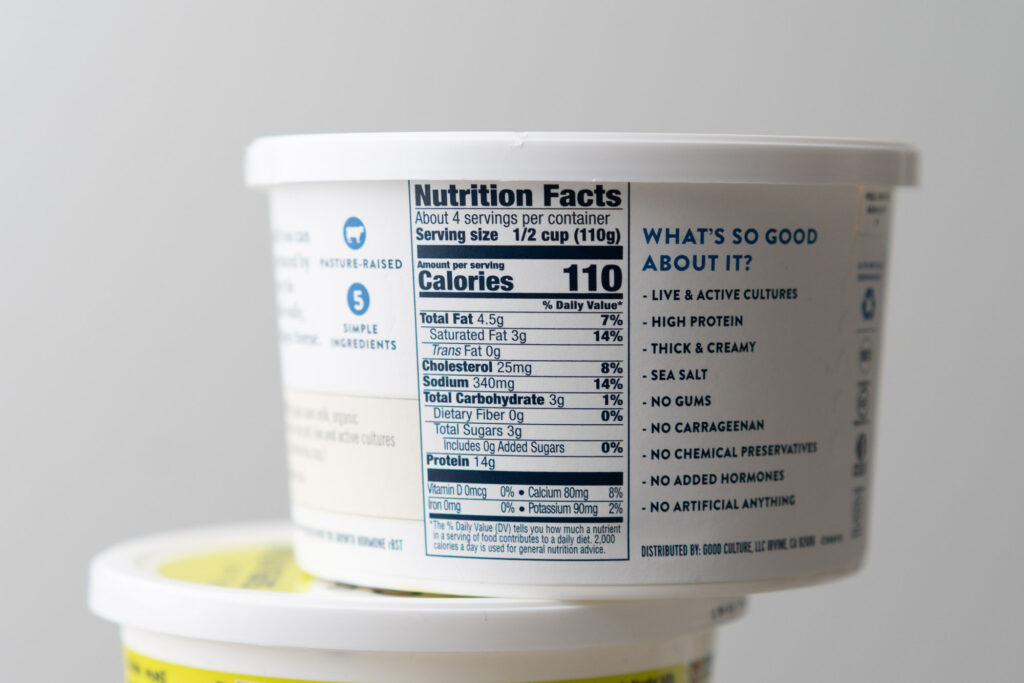
Yes, cottage cheese is a healthy snack that you may want to add to your diet. Its benefits include:
- Supports muscle growth and recovery: One cup of 4% cottage cheese can contain upwards of 28 grams of protein. If you’re aiming for one gram of protein per pound (which is recommended to build muscle), cottage cheese will help hit your target.
- Keeps you full longer: Cottage cheese is primarily casein protein, which takes longer to absorb than whey and will keep you feeling full for longer.
- High in calcium: Half a cup of cottage cheese has over 10% of your suggested daily calcium intake. As you always heard growing up, this supports strong bones.
- Enhances energy with B12: Cottage cheese is also rich in Vitamin B12, also known as cobalamin, and other B vitamins. Having enough B12 is essential to form blood cells and DNA, and perform other necessary functions.
If you opt for flavored cottage cheese or cottage cheese that comes with fruit toppings, make sure to check the sugar content.
Cottage Cheese Topping Ideas
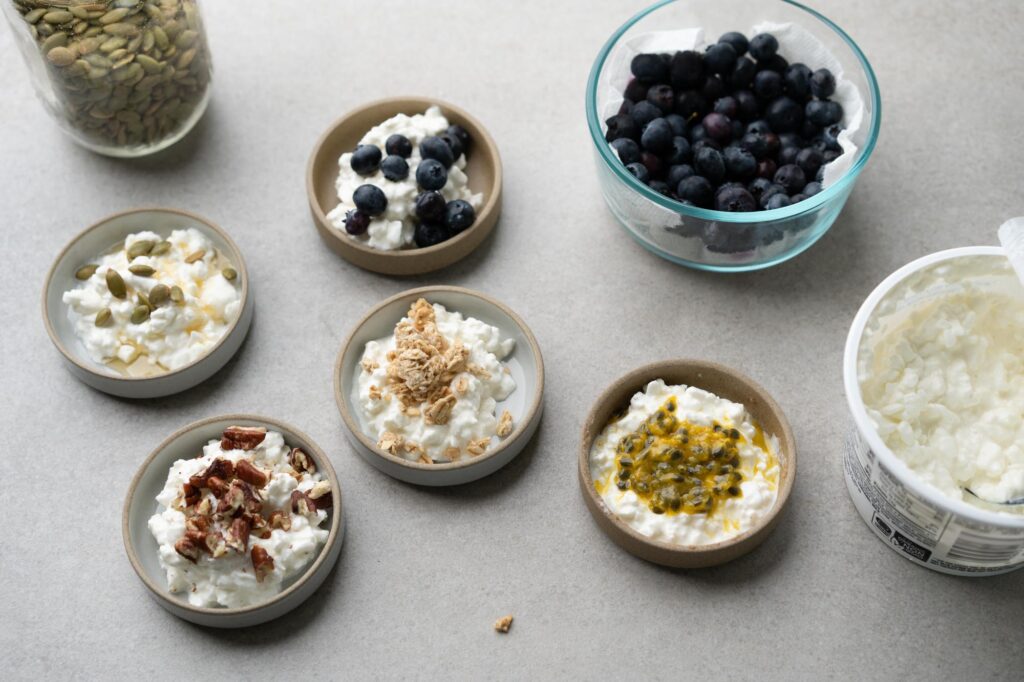
If the thought of eating cottage cheese on its own makes you cringe, add two to three toppings to create a sweet snack. Here are some of my favorites:
- Nuts: walnuts, sliced almonds, pecans
- Spices: cinnamon, nutmeg
- Fruit: cantaloupe, pineapple, berries
- Jam: boysenberry, raspberry, apricot
- Honey or maple syrup
- Rolled oats
What Else Does Cottage Cheese Taste Good With?
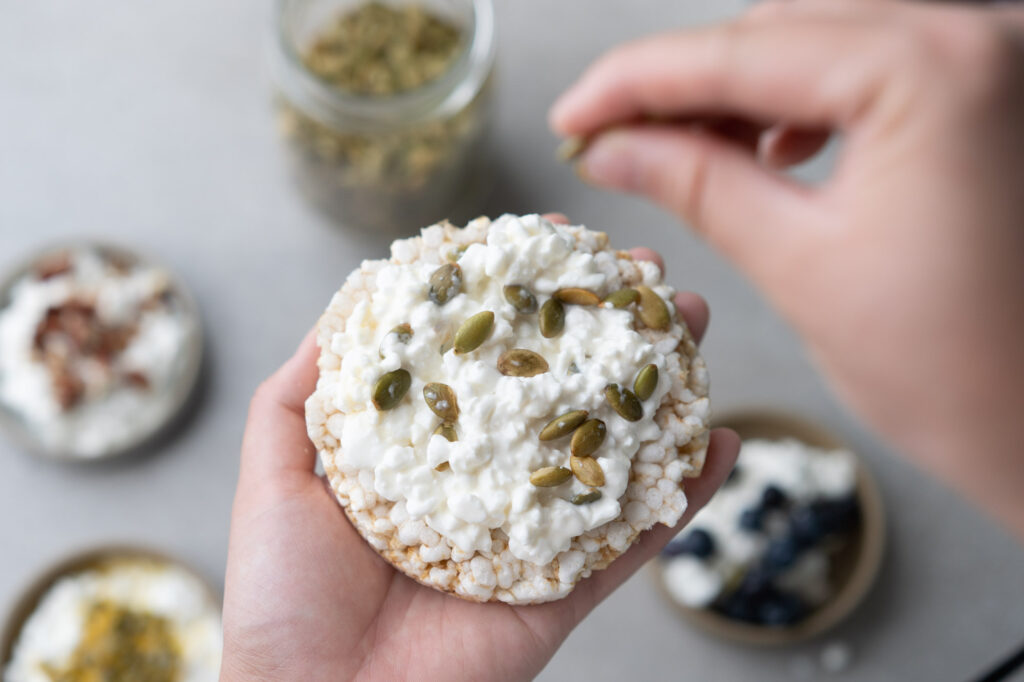
If you don’t want to eat a bowl of cottage cheese, there are plenty of other ways you can use it.
- Spread it on rice cakes: My favorite combination is apple cinnamon rice cakes, cottage cheese, and cinnamon.
- Mix it in pancake batter: In this recipe you can substitute the banana for cottage cheese or use ½ banana and ½ cottage cheese.
- Top your waffles: Use cottage cheese instead of whipped cream and top with berries.
- Try savory toast: Add cottage cheese to your toast and top with cucumber, tomato, salt, and pepper.
- Scramble your eggs: Whisk your eggs and some cottage cheese together and cook the mixture. Top with scallions or chives.
- Blend it in a smoothie: It makes your smoothie a little creamier and thicker.
Is Your Cottage Cheese Bad?
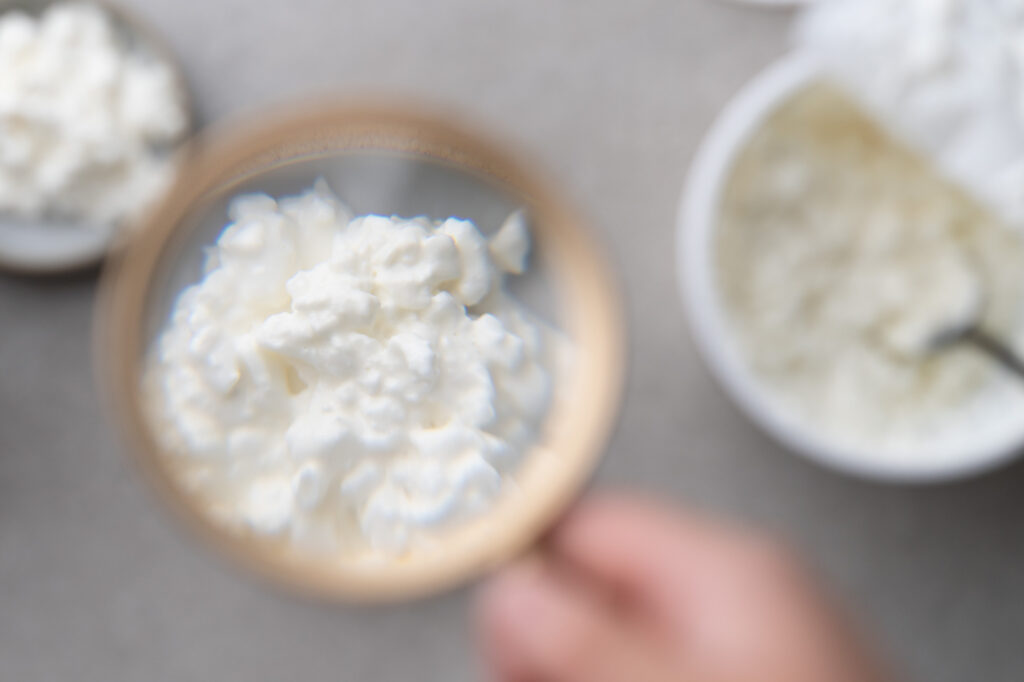
How do you know if you don’t like cottage cheese or if it’s actually bad? First, understand how long cottage cheese lasts. You can typically use it a few days past its sell-by date, give or take. Once it’s open, I try to consume the cottage cheese within a week. Some brands say it’s good for up to two weeks after opening.
There are a few telltale signs cottage cheese is past its prime:
- Mold: Obviously, if there are spots of mold it’s not good.
- Smell: Your cottage cheese should not smell pungent or rancid.
- Taste: It shouldn’t be overly sour or taste like spoiled milk.
- Texture: If it looks significantly different from when you opened it, be wary. This could either be very chunky or extra watery.
Now that you know what cottage cheese tastes like, it’s time to add it to your grocery list and start testing new recipes. Its mild flavor will support sweet and savory dishes. Plus, it’ll help you hit your protein goals.
You must be logged in to post a comment.